What causes the seasons?
Most people tend to believe that seasons depend on how far we are from the sun. However, that is not the case.
It’s true that the earth orbits around the sun in an elliptic orbit and that sometimes we are indeed closer to the sun than other times. When we are closer to the sun, it's called perihelion. When we are further away, it’s called aphelion.
However, this elliptical orbit does not play a part in the creation of our seasons. When it’s winter in the northern hemisphere, it’s summer in the southern hemisphere at the same time, independently on how close we are to the sun at that particular moment!
Actually, the earth is closer to the sun on January, when it’s winter in the northern hemisphere!
So, what exactly causes the seasons?
The earth rotates around itself, completing a rotation every 24 hours. At the same time it orbits around the sun, completing an orbit every 365 days. The rotational axis of the earth, however, is slightly tilted in respect to its orbit around the sun.
In the above image, the top extension of the pink axis represents the north pole, while the bottom extension represents the south pole. As we can observe, the tilt of the rotational axis of the earth never actually changes. What changes is which side is more illuminated by the sun, due to our orbit around it. The axis tilt is sometimes inclined towards the sun and other times towards the other side.
On the left side of the diagram, for example, the sun is shining on the north pole while the south pole is in darkness. It is summer in the northern hemisphere and winter in the southern. If we imagine the earth rotating around itself like a spinning top, we can observe that sunlight will never reach the southern pole. At the same time, the north pole will not experience any darkness at all! This is the reason why the poles have six-month days and six-month nights.
However, if we imagine a person standing in the middle between the two poles, the equator, then we observe that the person will experience both day and night. As we move from the equator towards north, the day gets longer and the night gets shorter.
The exact opposite occurs on the right side of the diagram, where it’s winter in the northern hemisphere and summer in the southern. We can now observe that the norther we move, the less daylight we get to see. In between the left and right diagram, there are spring and autumn, which interchange between the two hemispheres.
Less hours of daylight mean less energy, less heat, and thus lower temperatures, and winter. The low temperatures do not depend only on the duration of day and night, but mostly on how much the sun hits each hemisphere in general. In the above image we can see that the northern hemisphere receives a lot more rays than the southern. The opposite holds true when the rotational axis is facing away from the sun.
Another important factor apart from the quantity of rays is their inclination. The same quantity of sun rays falls vertically and therefore more concentrated on the equator than on the poles. The more we distance ourselves from the equator and we approach the poles, the more the sun rays fall on a bigger angle, as we can identify on the diagram below. Therefore, an equal amount of heat is spread over a larger area and gets dispersed more.
In all cases, sun rays fall vertically in the equator area. This is why on the equator high temperatures are observed all year round. On the other hand, rays always fall at a low angle on the poles, even during the summer. This explains the year-long low temperature on the poles.
The quantity of vertical or angled rays that a hemisphere receives depends on the position of the rotational axis of the earth in respect to the sun. The northern hemisphere receives more vertical rays when the northern pole tilts toward the sun, during the northern hemisphere summer.
During spring and autumn no hemisphere tilts toward the sun more than the other. Vertical rays only reach tropical zones close to the equator. The rest of the world will pretty much receive oblique rays. As a result, we experience mild conditions both north and south of the equator.
Lets not forget that oblique rays travel a greater distance within the earth’s atmosphere until they reach its surface, as we can visualise on the following diagram.
The lateral rays pass through a bigger part of the atmosphere, and much of their energy is dispersed in the atmosphere before it reaches the ground.
Which hemisphere has the most extreme climate?
As we saw at the beginning, the Earth is getting closer to the sun when for us in the northern hemisphere is winter and in the southern is summer. On the other hand, in our own summer and in the winter of the south we are farther away from the sun. Does this mean that the southern hemisphere has warmer summers and cooler winters?
It is true that the southern hemisphere receives more sunlight than the northern during the summer and less during the winter. But this is not enough to significantly affect the climate because the southern hemisphere generally contains more water than the North (the oceans). Water has a higher heat capacity than the ground, that is, when it’s hot it needs more energy to raise its temperature than the ground, and when it’s cold it releases more energy (heat) without its temperature dropping too much. So the water actually stabilizes the temperature.
As an exception, the southern pole (Antarctica) is colder than the northern pole. This is because Antarctica is at high altitude ice on land, far away from the ocean, while the northern pole is in the Arctic Ocean. As mentioned earlier, water stabilizes the temperature. Additionally, the large layer of white ice reflects most of the sun's rays back into space without absorbing them.
As a result of all the aforementioned points, each latitude on our planet has different hours of sunshine during the year, different amount and direction of rays, and different climate!
The above article is pretty much a summary of the “Earth Rotation and Tilt” video tutorials offered by Khan Academy. The section includes an interactive season simulator you can play with to further comprehend the concept.

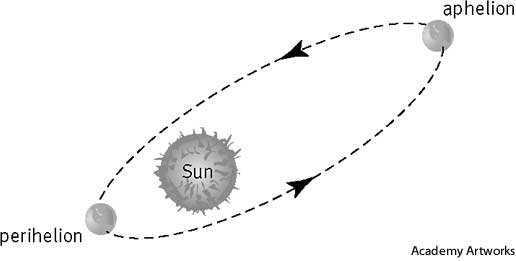
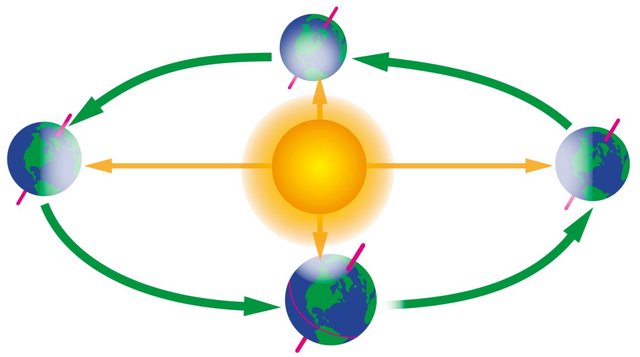
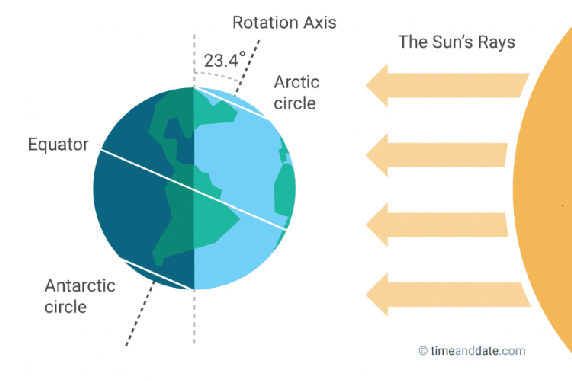
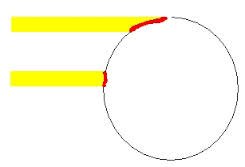
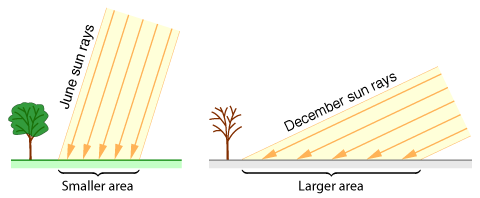
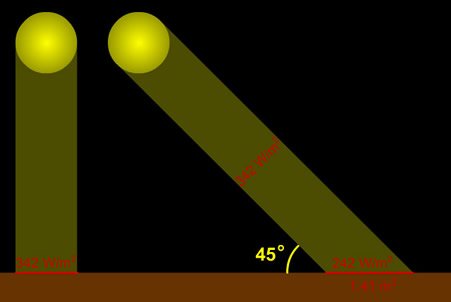
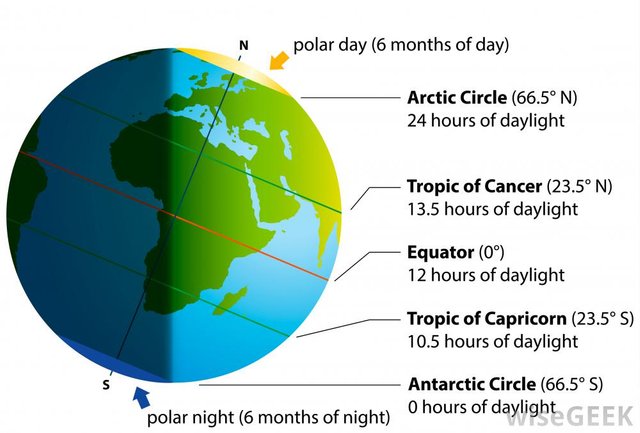
Excellent post. Keep it up elemenya.
Thanks, kyriacos.
I concur.
I thought it was pretty much only to do with the inclination and area, so I learned a good deal more here today :)
I'm glad I helped :)
No man, the earth is flat... thats why the seasons uh... because uh... wait a second.
Where are the flat earthers when you need a good joke huh?
With a strong enough telescope, we should be able to see them from anywhere on earth :D
lol :p